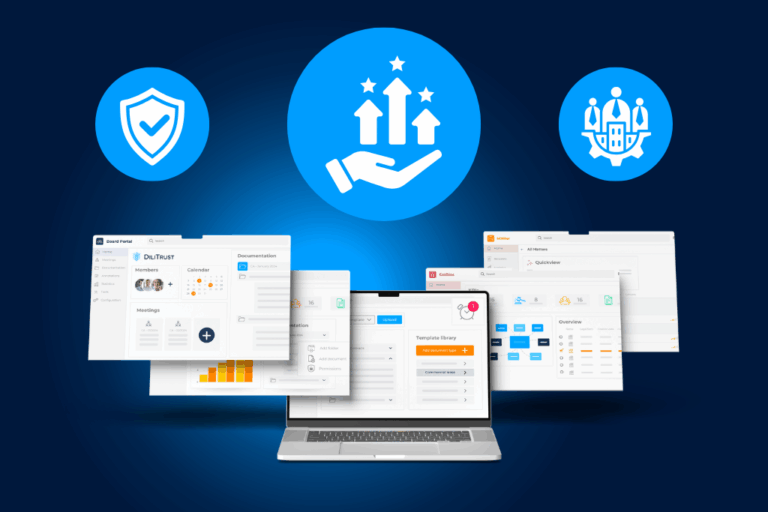Introduction
Family offices operate like most established organizations. They oversee investments, legal entities, strategic projects, and often work with a board. They also depend on a clear consolidated view of activities to function efficiently. Family office entity management follows the same logic. The difference is that many family offices still struggle to move from manual tasks to digital governance. These structures existed long before Excel ever appeared, which means digital transformation often starts with a need to explain the risks of staying in manual mode and the benefits of moving away from it.
When a mandate expires unexpectedly or an outdated file is used during a key meeting mistakes do not always announce themselves. That is the true trap of spreadsheet based entity management. And in the world of family offices, the stakes are high enough that there is no friendly cousin to complain to when something goes wrong.
Spreadsheets create an illusion of order. They look neat and organized at first glance. So what is the problem? The issues hide behind the scenes. What seems structured to one person may be confusing to another. What someone believes is the updated mandate structure may already be outdated because of a last-minute change they never saw. The list goes on, but below are some of the main pain points that appear when family offices rely on manual entity management.
What breaks when entity management lives in spreadsheets
Missed deadlines and penalties
When filing or renewal deadlines depend on one person, or a sheet last updated during the summer, it is only a matter of time before something goes wrong. Just one missed deadline can lead to big financial and regulatory penalties. When you know that it could have been avoided by simply getting an automatic alert, or a better view over mandates and responsibilities, it is hard to explain to stakeholders why it happened. Furthermore, the family office’s reputation can also suffer from such errors.
Outdated mandates
Spreadsheets depend on manual entries and on every person involved completing their tasks perfectly. Family offices evolve constantly with ownership updates new entities joining and board structures shifting. It becomes exhausting to update every change in a spreadsheet, and even more exhausting to make sure everyone is working from the correct version. Even the most diligent manager can accidentally rely on last months file when the decisions being made depend on what changed last week.
Incomplete records
Picture a missing field here a wrong date there a document stored in the wrong folder or a version saved under a confusing name. These small mistakes accumulate quietly and no one in the family office notices until something important no longer matches reality. Even the most attentive team cannot fully prevent errors when every update depends on manual entry. By the time someone realizes a detail is missing or incorrect the decision based on that information may already have been made. In governance, the information you cannot see becomes a risk you cannot control.
Fragmented control
Spreadsheets scatter information across endless files, drives, and folders, each one following its own naming logic depending on whoever created it. As the family office grows, these isolated data mines multiply and the gaps between them widen. Teams spend valuable time searching for the latest version, asking for confirmations, or trying to understand which document is the real source of truth. Even with the most disciplined workflow, fragmentation creates blind spots. If no one can guarantee that everyone is operating with the same clarity, risk grows.
The case for digital entity management in family offices
As family offices grow and expand, they add more entities, more jurisdictions, and more regulatory and reporting requirements. While spreadsheets work fine up until a certain point, they stop being as convenient at a larger scale as we just say.
A Legal entity management solution brings in the structure and clarity family offices need. Not only it improves transparency and information accuracy, but it also leads to more efficient working methods that save time and even money.
Centralized compliance visibility
Modern entity management platforms bring all deadlines, documents, and mandates into one secure centralized space. Working with a single source of truth reduces confusion and ensures teams rely on accurate information. It also means everyone, not only a select group, has visibility on the same facts. A Legal entity management tool adds another important layer: it offers a clear view of entity ownership and mandates so family office members can instantly see who currently holds a role, who has signing authority, and who is responsible for approvals. This makes it easier for everyone to locate files quickly and prevents the use of outdated notes that will not hold up in the next board meeting.
Automated governance workflows
Instead of relying on manual follow ups or personal reminders, family offices can depend on automated processes that keep governance activity running smoothly. Renewal notices, approval cycles, mandate expirations, and regulatory tasks move forward consistently with all the necessary parties aware of changes.
By shifting from a reactive to a proactive approach, teams no longer need to chase deadlines and can work with less stress. Automation also supports cost control since it prevents financial penalties by ensuring deadlines are met on time. It is a winning situation for family offices as they gain more predictability, less stress, and a much lower risk of unwelcome surprises.
Stronger accountability and audit readiness
Digital governance creates an environment where every action is recorded and every update has a clear origin. Tasks, approvals and decisions leave an auditable trail that makes it easy to understand who did what and when.
When auditors, regulators, or board members request information the family office can provide it quickly with organized traceability rather than digging through old files or comparing multiple documents. This level of structure strengthens accountability and builds trust across stakeholders.
With the right system in place, a family office moves from manual chaos to modern entity management that gives every relevant party access to the same accurate information while maintaining full control over permissions. This reduces errors, avoids delays, and ensures that only the appropriate stakeholders can review or approve official documentation.
Why the shift becomes inevitable at scale
At some point, the transition from Excel to structured governance is no longer optional.
You would not run a multimillion-dollar portfolio using sticky notes. So why keep your legal and compliance backbone trapped in Excel chaos?


